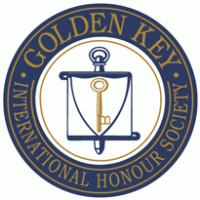

We report the whole-rock geochemistry, zircon SIMS U–Pb geochronology, and in situ zircon Hf–O isotopic compositions of the Jiama deposit in the Gangdese belt.

The post-collisional Gangdese metallogenic belt with over 45 Mt Cu has attracted worldwide attention. Our study supports the notion that the Lhasa terrane was derived from the northern margin of Gondwanaland, in association with formation of at least two stages of Tethyan Ocean basins, now exposed as the Sumdo belt and the Indus-Tsangpo suture. In conjunction with literature data, it is further argued that the southern and central parts of the Lhasa terrane, separated by the Sumdo eclogite belt, should have been an integrated block before the late Paleozoic. Our data suggest that these granitoids were generated largely by reworking of Paleoproterozoic ( Ga) basement materials. The Langxian rocks are granodiorites with slightly older zircon U-Pb ages of 355–352 Ma and lower εHf(t) values from −6.8 to −6.5. The Jiacha rocks are monzogranites that yield zircon U-Pb ages of 347–345 Ma and εHf(t) values from −5.4 to −4.9. This article presents zircon U-Pb and Hf isotope data, together with the whole-rock major- and trace-element composition, of Early Carboniferous granitoids newly identified from the Jiacha and Langxian areas in the southern Lhasa terrane, southern Tibet. Our studies on the geology of the Lhasa Terrane indicate that a combined in-situ U-Pb dating on inherited zircons from peraluminous granites and detrital zircons from Paleozoic sedimentary rocks can provide important constraints on paleogeography and tectonomagmatic evolution of other microcontinents along the northern margin of Gondwana.

This paper provides evidence of U-Pb dating on inherited zircons from peraluminous granites for the paleogeographic connection between the Lhasa Terrane and northern Australia. 494Ma inherited zircons might have been sourced from both the Western Australia and Lhasa Terrane itself. 1181 Ma inherited zircons from peraluminous granites in the central Lhasa subterrane were most likely derived from the Albany-Fraser orogenic belt in southwestern Australia and Wilkes Province in East Antarctica, as do the coeval detrital zircons from Paleozoic sedimentary rocks in the Lhasa Terrane, and that the ca. 960Ma) defined by detrital zircons from Neoproterozoic-Paleozoic sedimentary rocks in the western Qiangtang, Amdo, and Tethyan Hiamalaya in southern Tibet. 1 170Ma age population defined by inherited and detrital zircons in the Lhasa Terrane differs significantly from the age distributions (peak at ca. 1170Ma age population defined by detrital zircons from Paleozoic sedimentary rocks and the emplacement timing of Cambrian volcanic rocks in the Lhasa Terrane, respectively.

These granites belong to strongly peraluminous S-type granites, which contain abundant inherited zircons that define two main age populations of 1250 ∼ 1100Ma (peak at 1181 ± 14Ma) and 550 ∼ 450 Ma (peak at 494 ☗Ma), comparable to the ca. These data, in combination with the existing data of inherited zircons (1()4 analyses) from the Permian and Late Triassic peraluminous granites currently available in the central Lhasa subterrane, are used to characterize the inherited zircon signature of the Lhasa Terrane. This paper reports the whole-rock geochemical and zircon U-Pb geochronological data (95 analyses) of the Early Jurassic peraluminous granites in the central Lhasa subterrane. Thus the U-Pb age data of inherited zircons from peraluminous granites provide insights into provenance of clastic sediments in their source region, as do the detrital zircons from sedimentary rocks (and their metamorphosed equivalents). Peraluminous granites with abundant zircon inheritance are derived from partial melting of Al-rich rocks (e.


 0 kommentar(er)
0 kommentar(er)
